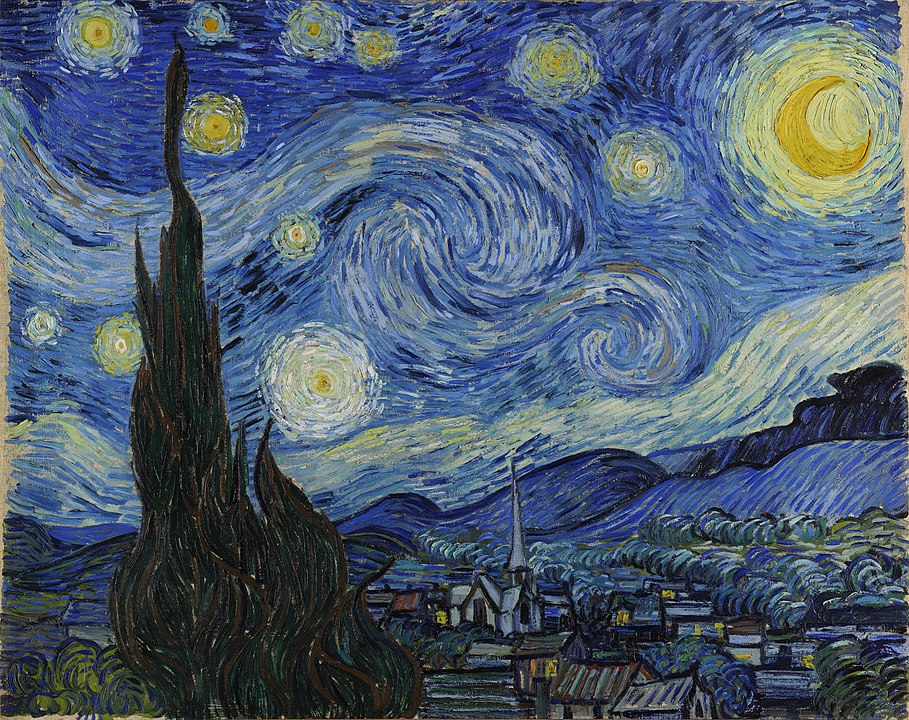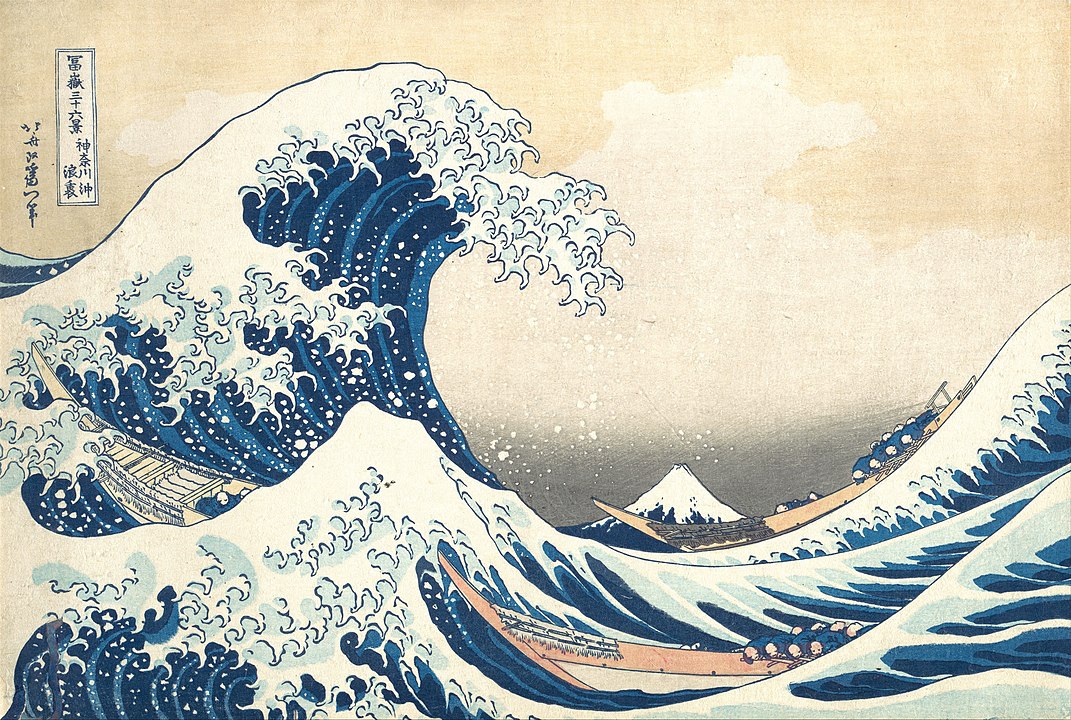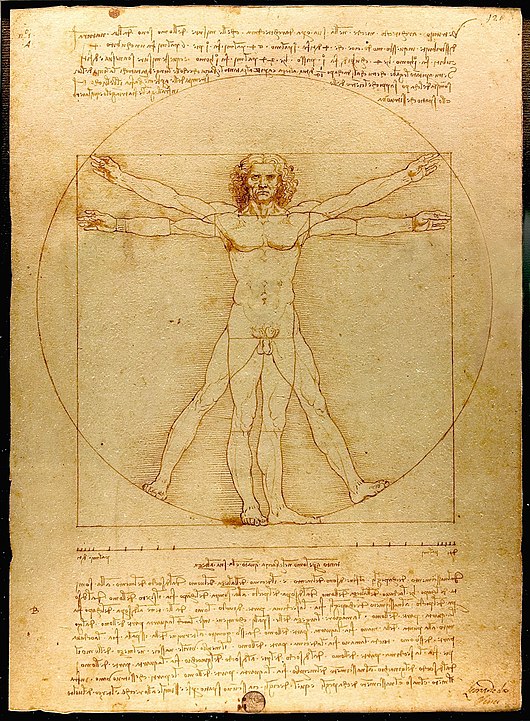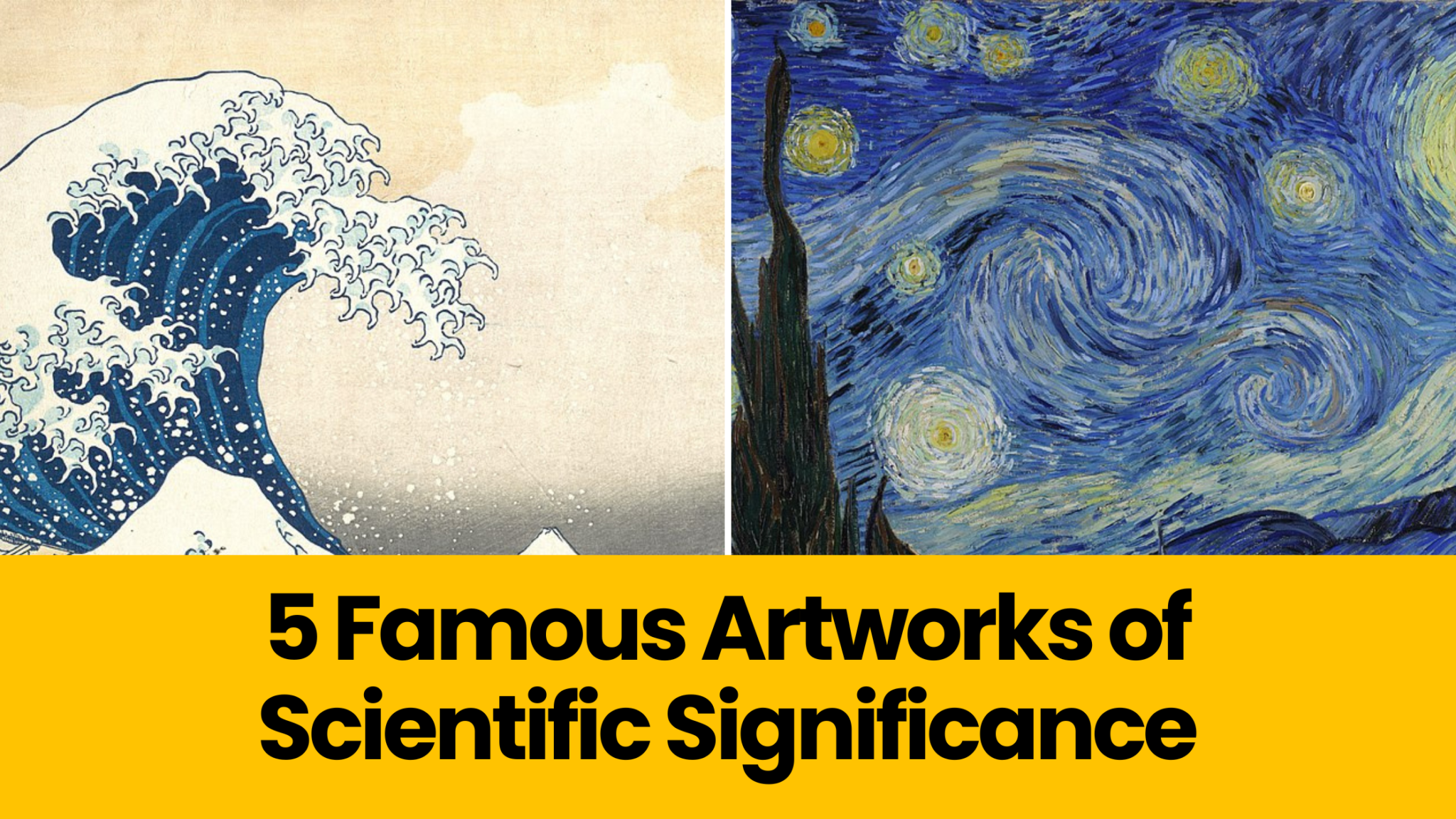Throughout History, Artworks served as a medium to express Scientific Ideas, explore Scientific Concepts, and provoke Scientific Inquiry into the general public as well as the scientific community. These Artworks connect Arts and Science which are often viewed as separate disciplines. In this article, we delve into the Scientific Significance of 5 Iconic Artworks that exemplify the integration of Art and Science.
Starry Night
In June 1889, Van Gogh admitted himself into the Saint-Paul-de-Mausole asylum in France to seek treatment for his mental illness. One night during his stay at the asylum, he looked out of his window and was mesmerized by the beauty of the night sky. Inspired by this beautiful scenery, Dutch post-impressionist artist Vincent van Gogh painted the famous painting, The Starry Night.
The painting has been the subject of scientific interest for its accurate depiction of the night sky, celestial objects and the atmospheric turbulence.

The Starry Night portrays the night sky with celestial objects such as the moon, stars, and even planet Venus. This gives us an idea of Van Gogh’s understanding of astronomy.
The painting is filled with swirling brushstrokes to represent stars and other objects in the sky. Scientists believe that the swirling brushstrokes were used to depict the movement of stars and the sky which they call atmospheric turbulence. This is the same reason why stars twinkle in the night sky. Swirling clouds can also be seen in the painting.
The art work of Van Gogh also focused on luminance which is a kind of art that uses light to depict a scene in time. Brushstrokes are used to create glowing light which seems to come out of painting in this form of art.
Van Gogh’s painting gave researchers potential insights into his mental state who struggled with mental illness throughout his life. Swirling patterns and vibrant colors in the painting can be seen as a visual representation of Van Gogh’s experiences of mental distress. Neuroscientists analyzed the painting and studied how the brain processes visual information.
Today, Starry Night is kept in the Museum of Modern Art in New York which continues to inspire and fascinate people around the world.
The Great Wave off Kanagawa
The Great Wave off Kanagawa is a woodblock print created around 1830-1833 by the Japanese artist Katsushika Hokusai. It is known as one of the best works of Hokusai and first in his series of prints called “Thirty-six Views of Mount Fuji.

The Great Wave off Kanagawa depicts a large wave with Mount Fuji in the background and three boats struggling to navigate through the storm-tossed sea. Cumulonimbus clouds can also be seen between the viewer and Mount Fuji.
Although The Great Wave off Kanagawa reflects the cultural and artistic traditions of Japan, it also has some features which are of scientific interest.
The composition of the print is dominated by the sea and the great waves. The waves appear to resemble solitary waves which can be seen in nature as tsunami waves or rogue waves. Solitary waves maintain the same shape and speed while propagating through a medium. The waves in the print also seem to depict a perfect spiral which portrays energy passing through the water in circular motion.
The snow-capped Mount Fuji can be seen in the background surrounded by dark colors suggesting the early morning. Cumulonimbus clouds can also be seen between the viewer and Mount Fuji. Cumulonimbus clouds generally indicate storms but no rain can be seen in the print.
Three fishing boats in the print transport live fish between markets. These boats have 8 rowers and can accommodate 30 people (Although only 22 can be seen in the picture).
The Great Wave off Kanagawa is a reminder of the power of nature and is considered one of the famous artworks of scientific significance.
The Vitruvian Man
The Vitruvian Man was created by Italian polymath Leonardo da Vinci in the late 15th century. The painting was inspired by a book written by Marcus Vitruvius Pollio who was a Roman Architect and Engineer. The Vitruvius book which described the proportions of the human body inspired da Vinci to explore the human anatomy and understand deeply about the human proportions.
The Vitruvian Man depicts a man standing with his arms and legs outstretched in a circle and square in two superimposed positions.

The painting provides some insights into the longstanding geometric problem of “Squaring A Circle”, which has been frustrating mathematicians since the days of Pythagoras!
The concept of Golden Ratio can also be seen in the Vitruvian Man by observing the ratio of the radius of the circle to the side length of the square in the painting.
The Vitruvian Man depicted the human body in a unique way exploring the geometry of perfect human proportions. It was believed that the center of the circle was placed on the navel of the man and the both fingertips and feet touch the circumference of the circle. Similar geometric representations of various parts of the body can be seen in the artwork.
Unlike other artworks, The Vitruvian Man is not displayed to the public everyday since artwork is the ink on the paper which can get damaged or faded due to the prolonged exposure to light. However, the artwork is exhibited to the public occasionally at Gallerie dell’Accademia in Venice.
The Persistence of Memory
In the year 1931, surrealist artist Salvador Dali created the renowned painting, The Persistence of Memory which explores various concepts that hold scientific importance. The painting showcases numerous surreal objects including his well known melting pocket watches. It is considered one of the famous artworks of scientific significance.
Salvador Dali was an admirer of Sigmund Freud (Austrian neurologist and psychoanalyst) and was influenced by his theories about dreams and the unconscious mind. Dali could incorporate ideas from his dreams into the paintings.
The Persistence of Memory depicted several dreamlike and surreal objects such as Melting Clocks on tree branches, Distorted profile of human (assumed to be Dali himself), Barren landscape, ants, empty shells and other Distorted Objects. Collectively, all these objects reflect Dali’s fascination with time, memory, and the subconscious mind.
The Melting Clocks in the painting appear to be soft and distorted, challenging the traditional notion of time as fixed and rigid. This exploration aligns with the concepts in physics such as Einstein’s theory of relativity which states that time is not absolute, but is relative to the observer’s frame of reference.
The Persistence of Memory has also garnered interest from psychological perspectives. Salvador Dali’s exploration of the unconscious mind and dream symbolism contribute to the deeper understanding of the human psyche. Dali’s painting aligns with the framework of Freudian psychoanalysis which taps into the realm of the subconscious.
Today, The Persistence of Memory is kept in the Museum of Modern Art (MoMA) in New York which continues to captivate audiences with its surreal and thought-provoking imagery.
Relativity
Maurits Cornelis Escher (M. C. Escher) was born on June 17, 1898 in Netherlands. He showed an early aptitude for drawing and had no formal training in mathematics. He began his career as a graphic artist but soon began to experiment with mathematical concepts in his artworks.
C. Escher is known for his mathematically inspired lithographs and woodcuts. He explored mathematical concepts such as tessellations, symmetry, hyperbolic geometry, and reflection in his artworks. Sometimes he would conduct his own research and implement mathematics into his artworks.
Relativity is an iconic artwork by M. C. Escher depicts a world where laws of gravity don’t apply. The Relativity portrays an architectural structure that has many Visual Paradoxes. The most prominent feature of the artwork is the staircases that seem to defy the laws of gravity. Featureless human-like figures can also be seen navigating in the labyrinthine like environment of the artwork.
Multiple perspectives can be seen in Relativity. The artwork challenges the viewer’s perception of space and orientation. The architectural structure contains doors, windows and even corridors that seem to be interconnected.
Relativity explores the spatial relationships between different objects that present in the architectural structure. Although gravitational forces exist in the artwork, it seem to be valid only based on the perception of the viewer.
Thus, Relativity is one of the famous artworks of scientific significance that explores gravity, geometry, optical illusion and perspectives.
Conclusion
The five artworks of scientific significance: Starry Night, The Great Wave off Kanagawa, The Vitruvian Man, The Persistence of Memory and Relativity bridge the gap between Art and Science, offering viewers with unique perspectives. These artworks Inspire Scientific Inquiry, Communicating Science to the Public and also Influence the Scientific Advancements.
References
http://www.crl.nitech.ac.jp/~ida/education/VitruvianMan/
https://www.leonardodavinci.net/the-vitruvian-man.jsp
Photos, Vector Graphics & Illustrations Credits
By Vincent van Gogh – bgEuwDxel93-Pg — Google Arts & Culture, Public Domain, https://commons.wikimedia.org/w/index.php?curid=25498286
By Katsushika Hokusai – Metropolitan Museum of Art: entry 45434, Public Domain, https://commons.wikimedia.org/w/index.php?curid=2798407
By Leonardo da Vinci – Leonardo Da Vinci – Photo from www.lucnix.be. 2007-09-08 (photograph). Photograpy: This image is the work of Luc Viatour. https://commons.wikimedia.org/w/index.php?curid=2738140
Disclaimer: The views, opinions and thoughts (including content in any form) expressed in this post belong solely to the author alone. Starry Stories does not guarantee the accuracy, completeness and validity of any statements made within this article. If you have additional questions or require more information, do not hesitate to contact us.

